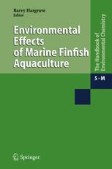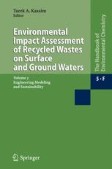Search
Search Results
-
Deconvolution Microscopy
Since its introduction in 1983, deconvolution microscopy has become a key image-processing tool for visualizing the cellular structures of fixed and...
-
Mediterranean Sea and Humans: Improving a Conflictual Partnership
Intense human activities in regions surrounding enclosed and semi-enclosed seas such as the Mediterranean produce, in the long range, a strong...
-
The Mediterranean Mercury Anomaly, a Geochemical or a BiologocalIssue
This chapter deals with the distribution and speciation of mercury in the water column, sediment and biota of both the Western and Eastern Basins of...
-
Satellite Observations as Indicators of the Mediterranean Sea’s Health
Satellite observations of the marine environment allow the assessment of optical, thermal and structural properties, which can be inferred from the...
-
Nutrient, Oxygen and Carbon Ratios, CO2 Sequestrationand Anthropogenic Forcing in the Mediterranean Sea
The climate and the environment, together with present tectonic morphology, constitute main constraints for the Mediterranean Sea geochemistry. The...
-
Human Physical Stresses at Normal and Abnormal Cabin Pressures
Atmospheric pressure is reduced as a function of altitude, thus making hypoxia, the condition of oxygen deficiency, a concern for aviation. The...
-
Occupational and Public Health Risks
Symptoms reported by passengers and crewmembers on commercial aircraft are described according to individual air quality-related sources,...
-
Assessing Nitrogen Carrying Capacity for Blue Hill Bay, Maine: A Management Case History
As net-pen aquaculture in coastal waters grows, regulatory agencies must consider the potential for localized eutrophication. To avoid excessive...
-
Synthetic Musks in Bioindicators: Monitoring Data of Fish and Human Milk Samples from the Czech Republic
Until the middle of the 1990s, no attention was paid to the pollution of the environment in Czech Republic by synthetic musk fragrances and to the...
-
Biomass Smoke and Health Risks – The Situation in Develo** Countries
About half of the world’s population relies on traditional fuels such as biomass (wood, agricultural residues, animal dung and charcoal) as the...
-
Indoor Air Pollution by Microorganisms and Their Metabolites
Microbial damage in indoor areas is caused most frequently by molds and bacteria. These microorganisms have a very important role in the...
-
Total Internal Reflection Fluorescence Microscopy in Single Molecule Nanobioscience
Recent development in total internal reflection fluorescence microscopy (TIRFM) has made it possible to directly monitor the behaviors of...
-
Tracking Movement in Cell Biology
This article is an overview of techniques for measuring movement of proteins, vesicles and cells using digital image processing. Diverse techniques...
-
River Inputs of Metals and Arsenic
This chapter deals with the inputs of dissolved heavy metals and arsenic by rivers to the Mediterranean Sea. It is divided into three parts. The...
-
Organic Chemicals in Groundwater: Modeling Fate and Transport
Hazardous organic chemical waste that has been placed in landfills or recycled for use as highway construction and repair materials has the potential...
-
Enantioselective Analysis of Polycyclic Musks as a Versatile Tool for the Understanding of Environmental Processes
In this chapter the application of enantioselective chromatography to process studies related to the microbial, enzymatic and photochemical...
-
Synthetic Musks in Suspended Particulate Matter (SPM), Sediment, and Sewage Sludge
Nitro musk and polycyclic musk fragrances accumulate in solid matters of the aquatic environment. They are analyzed by extraction with an organic...
-
Prospects for International Management of Intercontinental Air Pollution Transport
The recognition of the intercontinental transport of air pollution continues a historic trend towards greater awareness and management of air...
-
Sources and Impacts of Pesticides in Indoor Environments
Indoor contamination is one source of exposure to toxic pollutants and has been classified as a high environmental risk. Epidemiological research...
-
Fluorescence Lifetime Imaging Microscopy (FLIM)
Fluorescence lifetime imaging microscopy (FLIM) is a technique to map the spatial distribution of nanosecond excited state lifetimes within...
